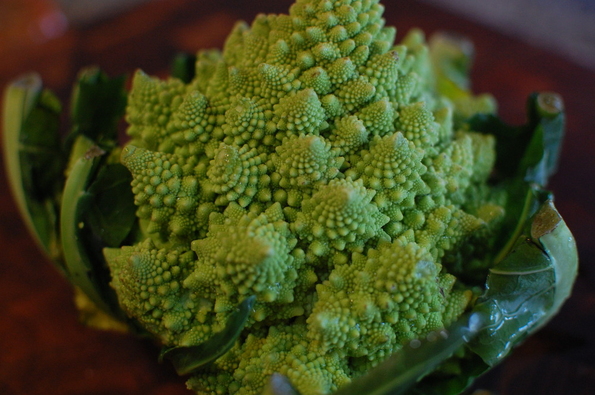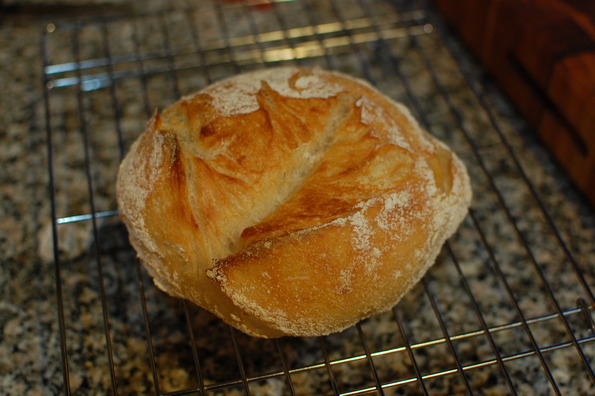At this point, it’s almost cliche in the world of food blogs to dedicate another page to Jim Lahey’s no-knead bread (a recipe popularized by Mark Bittman of the NY Times). It’s “easily the most popular recipe ever published in the New York Times” according to the New York Times Cookbook, and probably the most popular recipe on the internet. With that said, it is also one of my favorite recipes, and since this is my blog, I’m going to add a few more bytes to the topic.
The beauty of no-knead bread for me is not the simplicity — I love cooking really complicated things, so I would have no problem kneading, punching and proofing bread if it yielded great results. Instead, it’s the irresistible flavor that comes from the day-long fermentation and crisp, crackly crust provided by the steam from the wet dough inside the dutch oven. I’ve burned my tongue on many occasions (OK…every occasion) of this bread leaving the oven, too impatient to let it cool.
Eat it right out of the oven (well, give it a few minutes) with just a little bit of butter — ideally unsalted. I’ve had it with olive oil and herb butter too, but unsalted fresh butter is my favorite, since the others cover up the taste of the spongy interior. If you have any left, it makes a great sandwich, just be sure the slice at an angle so that the crust doesn’t cut the roof of your mouth.
Whip up the dough the night before, and it will be ready to go around dinnertime the next day.
———-
No-Knead Bread Recipe (from NY Times):
Adapted from Jim Lahey, Sullivan Street Bakery
Time: About 1½ hours plus 14 to 20 hours’ rising
3 cups all-purpose or bread flour, more for dusting
¼ teaspoon instant yeast
1¼ teaspoons salt
Cornmeal or wheat bran as needed.
1. In a large bowl combine flour, yeast and salt. Add 1 5/8 cups water, and stir until blended; dough will be shaggy and sticky. Cover bowl with plastic wrap. Let dough rest at least 12 hours, preferably about 18, at warm room temperature, about 70 degrees.
2. Dough is ready when its surface is dotted with bubbles. Lightly flour a work surface and place dough on it; sprinkle it with a little more flour and fold it over on itself once or twice. Cover loosely with plastic wrap and let rest about 15 minutes.
3. Using just enough flour to keep dough from sticking to work surface or to your fingers, gently and quickly shape dough into a ball. Generously coat a cotton towel (not terry cloth) with flour, wheat bran or cornmeal; put dough seam side down on towel and dust with more flour, bran or cornmeal. Cover with another cotton towel and let rise for about 2 hours. When it is ready, dough will be more than double in size and will not readily spring back when poked with a finger.
4. At least a half-hour before dough is ready, heat oven to 450 degrees. Put a 6- to 8-quart heavy covered pot (cast iron, enamel, Pyrex or ceramic) in oven as it heats. When dough is ready, carefully remove pot from oven. Slide your hand under towel and turn dough over into pot, seam side up; it may look like a mess, but that is O.K. Shake pan once or twice if dough is unevenly distributed; it will straighten out as it bakes. Cover with lid and bake 30 minutes, then remove lid and bake another 15 to 30 minutes, until loaf is beautifully browned. Cool on a rack.
Yield: One 1½-pound loaf.

